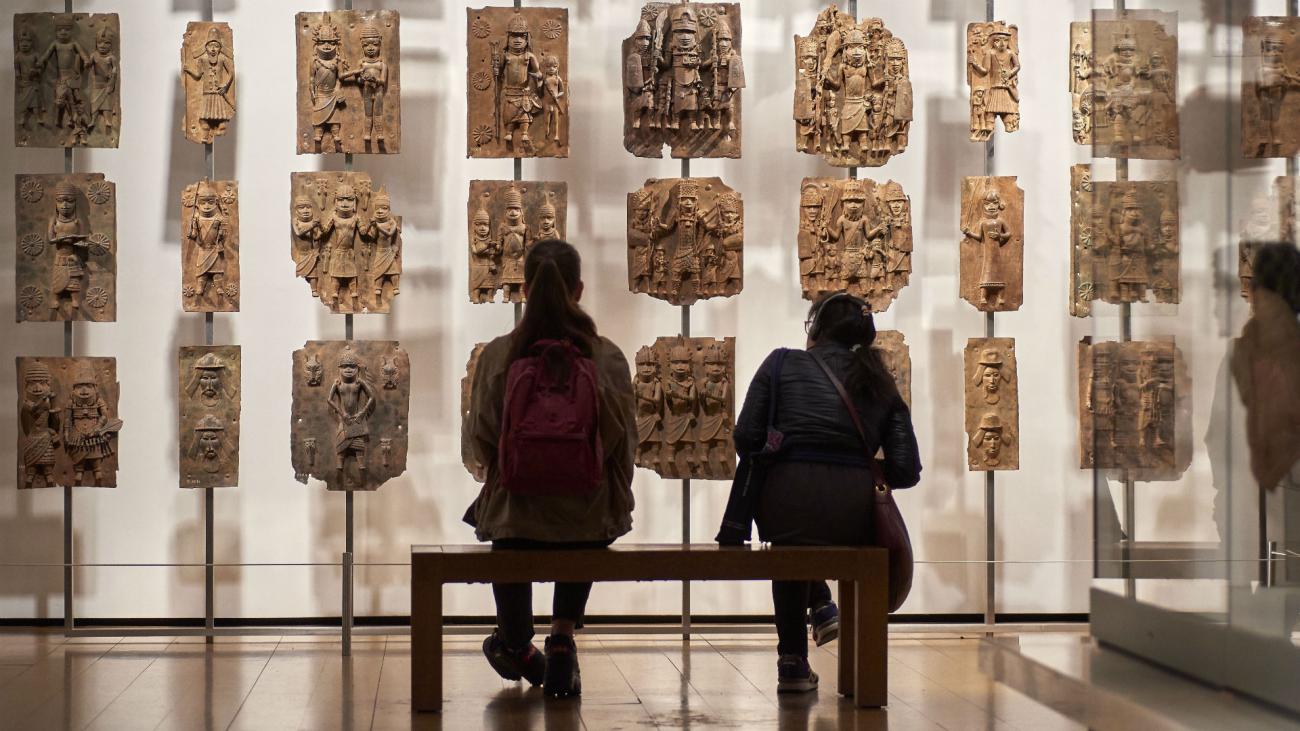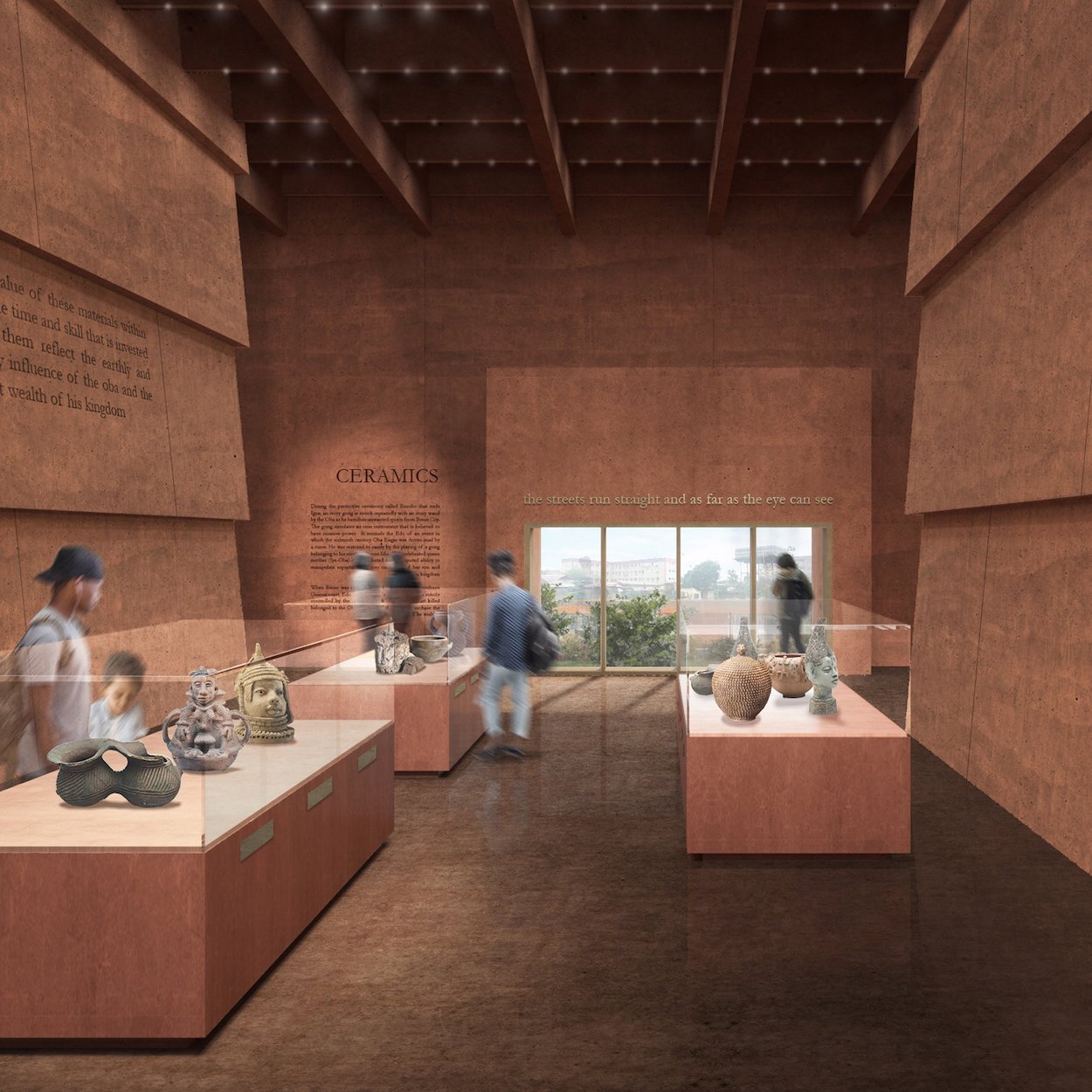Restitution of the Benin Bronzes—thousands of bronze figurines, plaques, and altars looted from Nigeria by British troops in 1897—was never going to be easy. Most of the bronzes made their way into Western museums over the past century, a potent reminder of colonialism for Nigerians, who have long called for their return. Plans to repatriate the artifacts have moved ahead as institutions faced a reckoning about aggressive acquisition tactics. The German government, the Smithsonian, and the Metropolitan Museum of Art all agreed to transfer ownership of looted bronzes to Nigeria in recent years. Plans called for the artifacts to be displayed in Benin City’s upcoming Edo Museum of West African Art, a glittering institution designed by David Adjaye and slated to open in 2025.
Though the returned treasures reportedly sparked an “artistic awakening” in Benin, disputes surrounding their ownership abound. Would they fall in the hands of Nigeria, its National Commission of Museums and Monuments (NCMM), or Ewuare II, Benin’s oba? Restitution plans snagged when Muhammadu Buhari, Nigeria’s outgoing president, transferred ownership of the looted items to the oba, announcing that any returned artifacts “may be kept within the palace of the oba” or in any location he considers secure. He stipulates that no Benin Bronze can be moved without the oba’s written authority and he must inspect and authenticate each one upon its return.
A representative of the royal family said the oba wants to display the works publicly, but the prospect of private ownership sparked anxiety among Western museums and the NCMM negotiating their return given the oba’s astronomical wealth and the bronzes’ collective value of $130 billion. “We were blindsided,” an NCMM official told the BBC. “This is not practical nor compatible with existing Nigerian law [and] it was written by someone who doesn’t understand how museums work.”
The New York nonprofit Restitution Study Group (RSG) alleges the bronzes were commissioned by the oba’s slave-trading ancestors, who sealed the fate of their own people. They plan to sue the Smithsonian and are stalling efforts at the Met. “These are slave-trade relics being returned to the heirs of the slave trade,” Deadria Farmer-Paellmann, director of the RSG, told the New York Post. “They are rewarding slavery twice.”
According to Phillip Ihenacho, the Edo Museum’s director, repatriation isn’t so cut-and-dry—and should be left in the hands of Africans without Western scrutiny. “It seems fine for the West to take more than 100 years to begin to act on restitution, but unforgivable that Nigeria does not resolve complex domestic and historical issues instantaneously,” he wrote in The Art Newspaper. Britain’s pillage of Benin City, he argues, accelerated the disruption of manufacturing systems for arts and culture; rebuilding this infrastructure is the museum’s main priority. “There should be debate and disagreement about what is the most appropriate outcome [for the bronzes]. This is only natural and will take time to fully resolve.”



